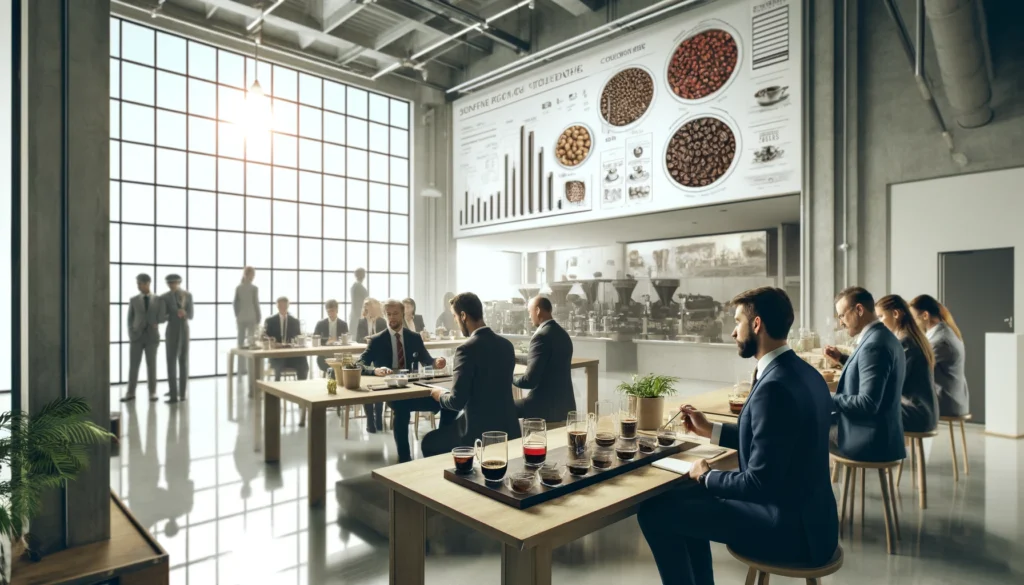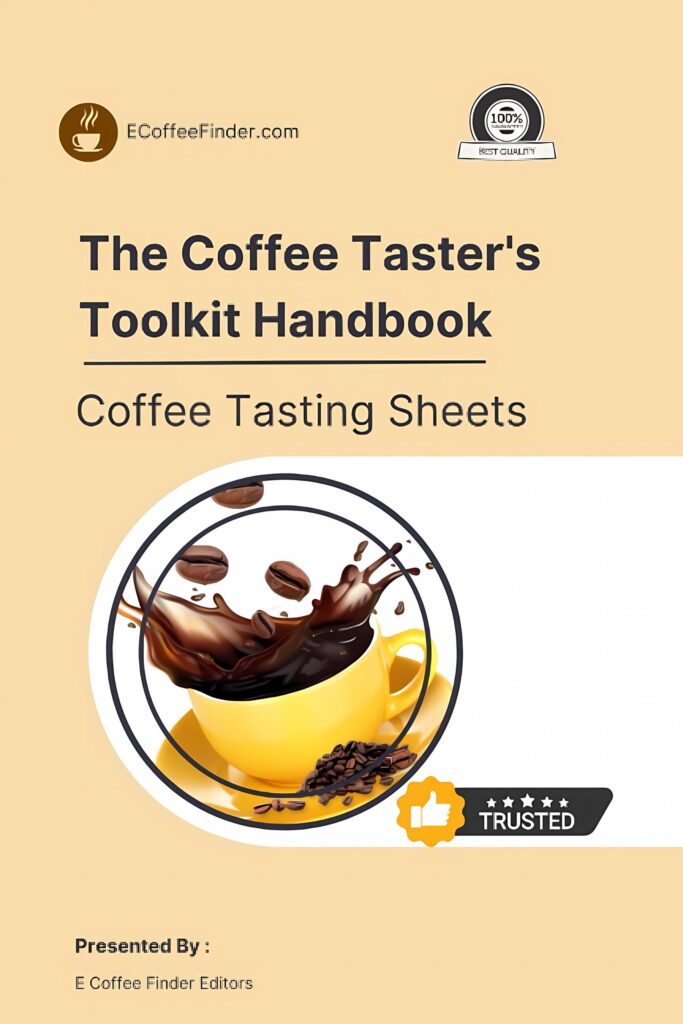Coffee Tasting Like a Pro: How to Taste Coffee for Flavor Notes
For coffee lovers, there’s nothing quite like discovering the unique and complex flavors in a freshly brewed cup. Whether you’re a seasoned connoisseur or just starting to explore the world of specialty coffee, learning how to properly taste and evaluate coffee can open up a whole new dimension of enjoyment.
In this article, we’ll dive into the art of coffee tasting and provide you with the skills and techniques to taste coffee like a pro. By the end, you’ll be able to detect a wide range of flavor notes, from delicate floral aromas to rich, chocolatey undertones. So grab your favorite mug, take a deep breath of that tantalizing coffee aroma, and let’s get started!
Understanding the Basics of Coffee Tasting
The foundation of coffee tasting lies in your senses – sight, smell, and taste. Each of these plays a crucial role in unveiling the full flavor profile of a coffee.
Let’s start with sight. When you pour your coffee, take a moment to observe the color and consistency of the liquid. Is it a deep, rich brown or a lighter, golden hue? Is it thick and syrupy or thin and light? These visual cues can provide insight into the coffee’s origin, roast level, and even brewing method.
Next, engage your sense of smell. Lean in and take a deep whiff of the freshly brewed coffee. What aromas do you detect? Floral notes? Fruity or nutty undertones? The volatile compounds in coffee release these captivating scents, which contribute significantly to the overall flavor experience.
Here is a presentation table summarizing the key points of the “Coffee Tasting Like a Pro” article:
| Section | Key Points |
|---|---|
| Understanding the Basics of Coffee Tasting | – Engage your senses: sight, smell, taste – Observe color, consistency, aroma – Note body, acidity, sweetness |
| Developing Your Palate | – Observe appearance and aroma – Slurp and swirl to distribute across the tongue – Focus on flavor notes and evolution – Consider body, acidity, and finish |
| Mastering the Tasting Technique | – Observe appearance and aroma – Slurp and swirl to distribute across tongue – Focus on flavor notes and evolution – Consider body, acidity, and finish |
| Putting it All Together | – Practice and experiment with brewing methods – Attend coffee tastings and workshops – Savor the sensory experience |
Finally, it’s time to taste the coffee. Take a sip and let it linger on your tongue, allowing your taste buds to explore the various flavors. Pay attention to the coffee’s body (its weight and mouthfeel), acidity (its bright, tart, or sour notes), and sweetness (ranging from subtle to bold). These elements work in harmony to create the unique flavor profile of the coffee.

Developing Your Palate For Coffee Tasting
Like any skill, becoming a proficient coffee taster takes practice and dedication. But don’t worry, with a little time and effort, you’ll be well on your way to honing your palate and uncovering the hidden depths of your favorite brews.
One of the best ways to start is by tasting a variety of coffee origins and roast levels. Explore the differences between a light, bright Ethiopian coffee and a rich, smoky dark roast from Brazil. Notice how the flavors, aromas, and mouthfeel can vary dramatically between different coffee types.
Another helpful tip is to keep a tasting journal. As you sample different coffees, jot down your observations and impressions. What specific flavors did you detect? How would you describe the coffee’s overall profile? Over time, you’ll start to recognize patterns and develop a deeper understanding of the nuances that distinguish one coffee from another.
It’s also worth investing in a coffee-tasting wheel or flavor wheel. These visual aids can serve as a valuable reference, helping you identify and categorize the various taste and aroma notes you encounter. From caramel and chocolate to citrus and stone fruit, these wheels can expand your flavor vocabulary and deepen your appreciation for the complexity of coffee.
Mastering the Coffee Tasting Technique
Now that you’ve laid the groundwork, let’s dive into the tasting process itself. Proper technique is key to unlocking the full potential of a coffee’s flavor profile.
Begin by observing the coffee’s appearance, noting its color, clarity, and any visible suspended particles. Then, take a deep whiff of the aroma, paying attention to the scents that immediately jump out at you.
Next, take a sip of the coffee and let it swirl around your mouth. Slurp it in a bit to aerate the liquid and distribute it evenly across your tongue. This allows you to experience the full range of flavors and textures.
As you taste, focus on the coffee’s different flavor notes. Is there a hint of citrus or berries? Do you detect underlying notes of chocolate or nuts? Pay attention to how the flavors evolve as the coffee moves through your mouth and down your throat.
Don’t forget to consider the coffee’s body, or mouthfeel. Is it light and delicate, or rich and creamy? How does the acidity balance with the sweetness? These tactile sensations are just as important as the specific flavors in shaping the overall tasting experience.
Finally, take note of the coffee’s finish, or aftertaste. Does it linger pleasantly on your palate, or does it fade quickly? A well-crafted coffee will often leave you with a satisfying, lingering finish that invites you to take another sip.
Coffee Tasting: Putting it All Together
With practice and dedication, you’ll soon be tasting coffee like a true connoisseur. But remember, the ultimate goal is not to simply identify a laundry list of flavors – it’s to fully immerse yourself in the sensory experience and derive genuine enjoyment from the coffee.
As you refine your tasting skills, don’t be afraid to experiment and explore. Try brewing the same coffee using different methods to see how it affects the flavor profile. Attend local coffee tastings or workshops to learn from experienced baristas and roasters. And most importantly, savor every sip, allowing the coffee’s complexities to unfold and delight your senses.
Happy tasting, coffee lovers!
Here is a compelling call-to-action to promote “Introducing The Coffee Taster’s Toolkit Handbook: Coffee Tasting Sheets”:
Take Your Coffee Tasting to the Next Level with the Ultimate Handbook!

Discover the secrets of professional coffee tasting with the Coffee Taster’s Toolkit Handbook. This comprehensive guide provides you with customizable coffee-tasting sheets to document your sensory experiences in rich detail.
Whether you’re a seasoned connoisseur or just beginning your coffee-tasting journey, the Coffee Taster’s Toolkit equips you with the tools to:
- Precisely record aroma, flavor, acidity, body, and finish
- Develop your palate and refine your tasting skills
- Build a flavor library to reference and compare your tastings
- Become a true coffee expert who can describe nuanced profiles
Stop settling for generic tasting notes. Elevate your coffee experience with the structured framework of the Coffee Taster’s Toolkit Handbook. Order your copy today and unlock a whole new level of coffee appreciation!

